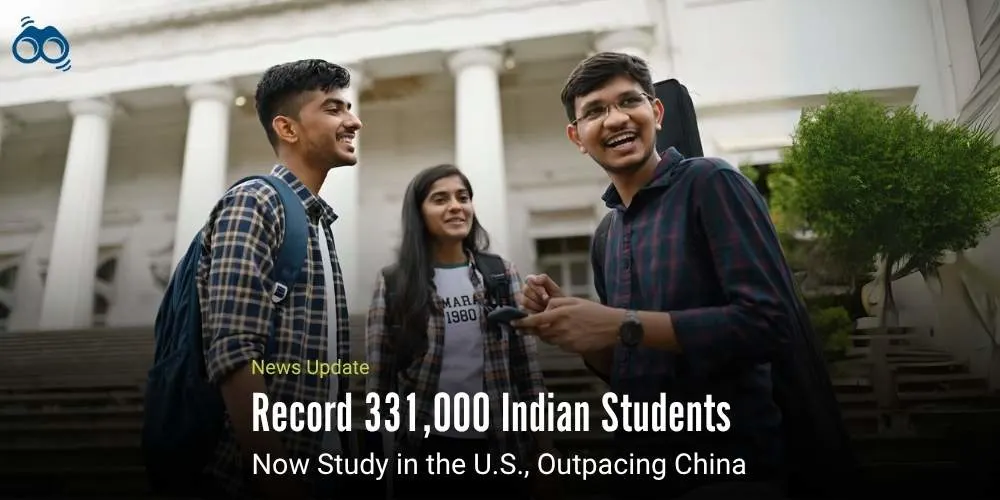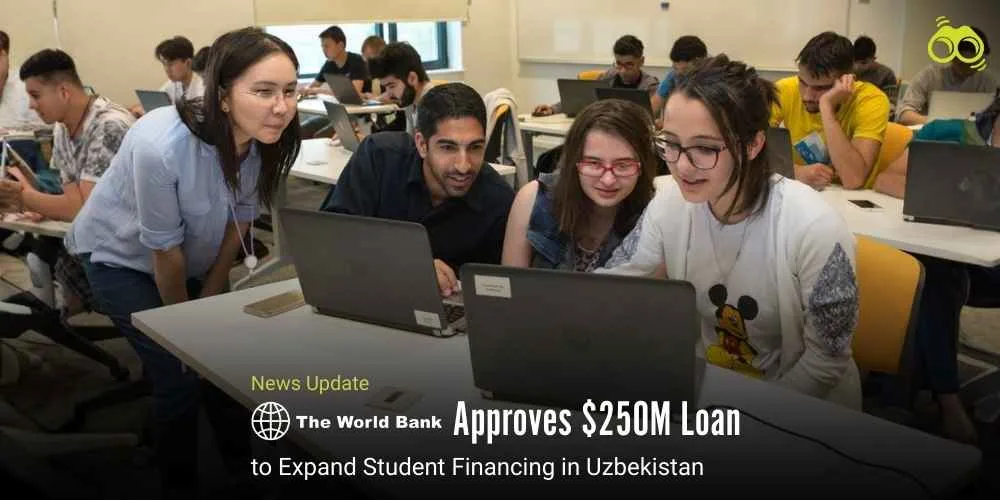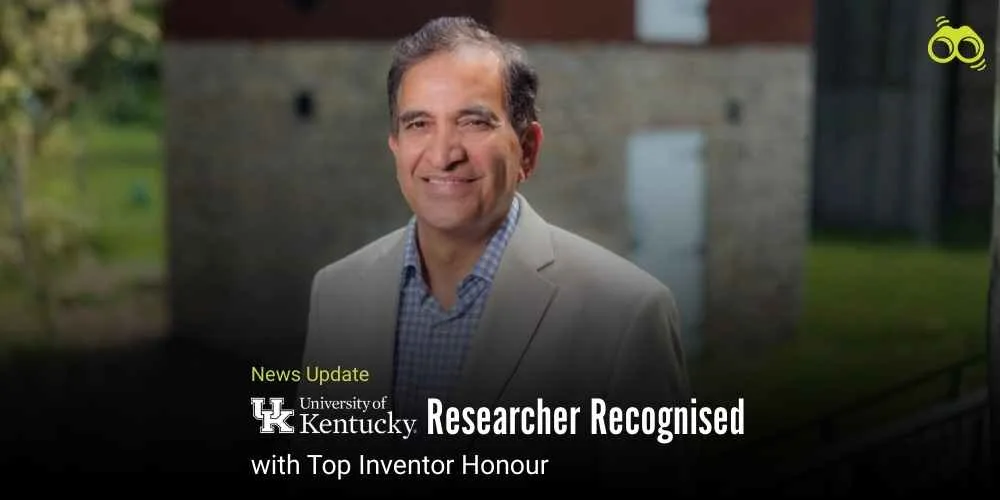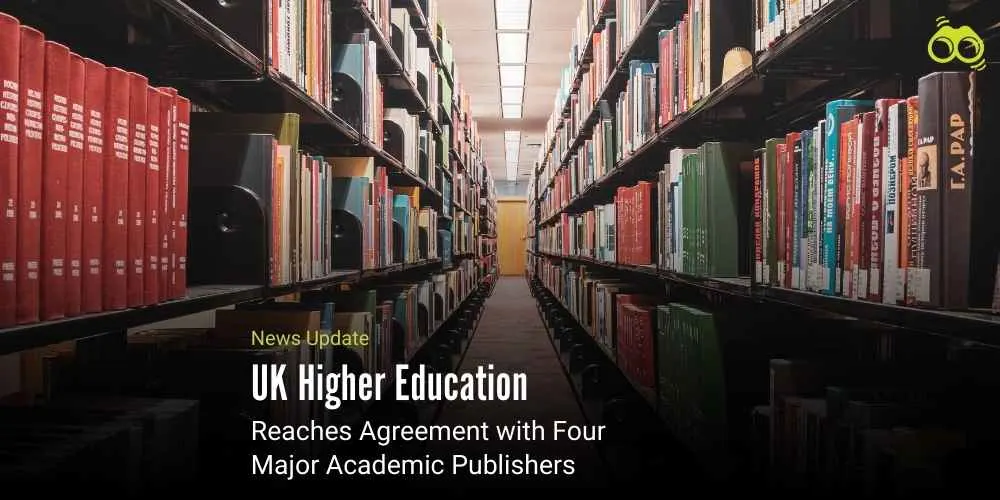International Student Community Hits 1.1 Million in the US
US Sees 23% Rise in Indian Students Amid Global Education Shift
The international educational landscape is in transition, as new statistics reveal a drastic shift in the pattern of student migration. With overseas education becoming larger in scope and impact, recent patterns indicate that Indian students are now driving to US universities, reflecting a significant trend in international student mobility and academic exchange. Recent statistics revealed that India has finally surpassed China as the primary origin of international students within the United States. Open Doors, a publication of the US Department of State and the Institute of International Education, released a report stating that during the 2023–2024 academic year, there was a 23% increase in Indian student migration into US institutions, totalling more than 331,000. Conversely, China recorded a 4% fall in student enrollment over the same period.
In total, the US community of international students hit a record level of 1.1 million, up 7% on last year. Combined, Indian and Chinese students now represent over half of all foreign education enrollments at American universities. This reflects changing international educational trends and the ongoing popularity of US universities as international study destinations. Indian students are showing keen interest in studying STEM-oriented subjects such as engineering, computer science and mathematics. These courses continue to be in vogue because they have high career prospects and the format of American university entry, where technical disciplines are generally given preference.
The United States remains a top choice for international education; however, a growing number of American students are opting to study abroad. The 2022–2023 academic year saw over 280,000 US students study overseas, marking a 49% increase from the previous year. Italy, the United Kingdom, Spain, and France were the most popular destinations, together hosting nearly half of all international students. In spite of the rise in the number of international students in the USA, there have been concerns regarding possible policy shifts. As per the news, student activists could be subjected to stricter regulations under the new administration, which might influence visa terms and freedom on campus. This has left many wondering what issues Indian students in the US might have, particularly about the political environment and immigration regulations.
For most students in India, education is still a worthy cause for study in the US in terms of quality education, research exposure, and worldwide exposure. However, there are mainly increased costs, uncertainties related to visas, and adjustments to culture. Regarding the question of which city in America has the largest number of Indian students, places like New York, California, and Texas usually come to mind due to their big networks of universities and established Indian communities. In the coming years, or 2025, the number of Indian students in the US will depend on visa policies, economic trends, and institutional outreach. As global education markets grow, with international student enrollments growing, both India and the US must ensure that their academic relations remain strong and that student mobility continues to be equitable, inclusive, and forward-looking.
For most students from India, it is indeed a great cause to take up education in the United States, which is regarded with respect to the quality of education, research exposure, and exposure around the world. These factors include increased costs, uncertainties related to visas, and adjustment to culture. As for the question of which city in America has the largest number of Indian students, New York, California, and Texas generally come to mind due to their big networks of universities and settled communities of Indian origin. Looking at the future, that is in 2025, numbers could change depending on fluctuations in visa policies and economic trends, as well as information provided by the institutions. The very presence of an international student in a rapidly morphing global education market-which India and the US need to maintain strong academic ties and student mobility, must continue as egalitarian, inclusive, and future-looking relaxation.
Editor’s Note:
The most recent Open Doors report indicates a significant change in trends in international education, with India now taking over from China as the number one source of foreign students in America. This is an indication of the increasing ambition of Indian students, coupled with the ever-attractive power of American universities as hubs of academic excellence worldwide. With more than 331,000 Indian students in the 2023–2024 academic year,a 23% increase, India's presence in the global student population has become the focus of American higher education. The majority of the students still opt for STEM fields, including engineering, computer science, and mathematics, attracted by good career opportunities and the orderly admission procedures of US institutions. But this increase in enrollment coincides with increased uncertainty. News of possible policy changes, such as tougher regulations on student protesters and greater surveillance on visa terms, has caused consternation regarding the long-term viability of studying in the US.
These moves raise serious questions over the plight of Indian students, both concerning immigration and expense, but also in dealing with cultural and political nuances. While cities such as New York, California, and Texas continue to be in vogue because of their settled Indian populations and university networks, affordability and availability are issues that continue to haunt many applicants. The larger ramifications of this phenomenon reach far beyond education. As the mobility of students remaps global academic and financial worlds, industries associated with foreign education, real estate, travel, and consultancy services can potentially feel changes in demand. The increase in US outbound students, of which almost half opt for destinations in Europe, further underscores the changing dynamics of global exchange. In this regard, both India and the US need to strive towards building institutional cooperation, equitable visa policies, and fostering inclusive academic spaces. Universities need to extend support mechanisms for international students, such as financial assistance, mentorship, and greater post-study guidance, if momentum is to be maintained. While doing that, Indian policymakers also need to expand pre-departure facilities and probe for bilateral arrangements that safeguard student interests overseas.
Skoobuzz mentions that education should still be a bridge between countries, never a battlefield of political interests. The increased visibility of Indian students in the US is an affirmation of their resilience and cosmopolitanism, but that needs to be followed through with policies that ensure fairness, transparency, and sustained academic collaboration.
FAQs
1. Why are Indian students increasingly choosing US universities?
Indian students are choosing US universities because of the high quality of education, strong research facilities, and a wide range of courses. Many are drawn to the flexibility in academic programmes, better job opportunities after graduation, and the global reputation of American degrees. The US also offers more chances for scholarships and practical training, especially in science and technology fields.
2. What are the benefits for Indian students in the US?
Studying in the US gives Indian students access to world-class teaching, advanced laboratories, and international exposure. They can build strong professional networks, improve their career prospects, and gain experience through internships and part-time jobs. Many students also benefit from cultural exchange and personal growth while living in a diverse and dynamic environment.
3. How does the US support international students from India?
US universities offer support through international student offices, counselling services, and career guidance. Many institutions provide orientation programmes, visa assistance, and help with housing and health insurance. Some universities also offer scholarships and financial aid to help students manage their expenses.
4. Which US universities have the most Indian students enrolled?
Universities in states like California, Texas, and New York tend to have the highest number of Indian students. Institutions such as the University of Southern California (USC), Purdue University, University of Texas at Dallas, and Northeastern University are known for large Indian student communities, especially in engineering and computer science programmes.
5. Is the number of Indian students in the US expected to grow?
Yes, the number of Indian students in the US is expected to grow, especially in technical and postgraduate courses. As long as visa policies remain stable and universities continue to offer strong academic and career opportunities, more students from India are likely to apply. However, political decisions and rising costs may affect future growth.














0 Comments (Please Login To Continue)